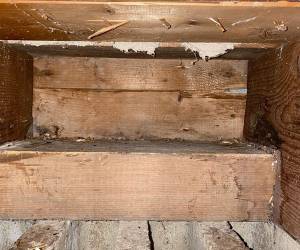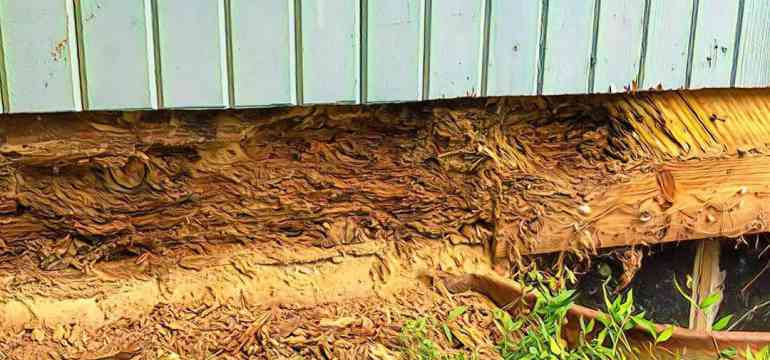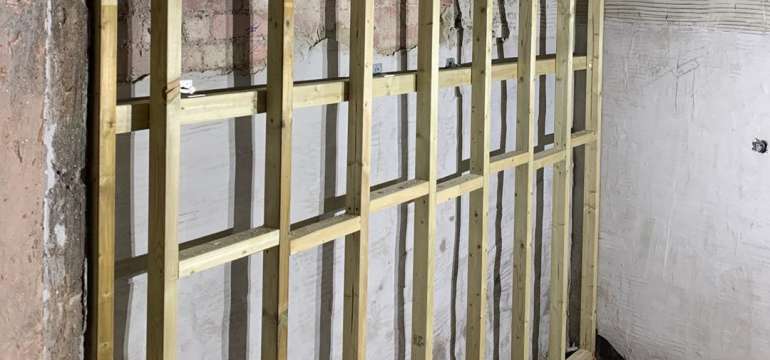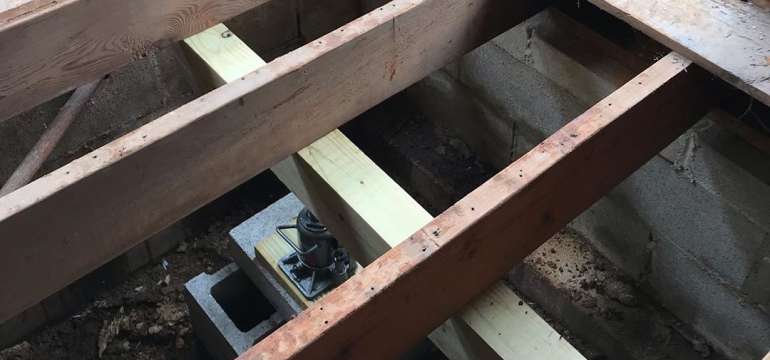Do you suspect that some of the wood used in the construction of your home is now rotten? As the years pass by and moisture builds up, it is not uncommon to find out that your home suddenly needs to be elevated for a costly repair. Many people want to see whether this is something they can tackle on their own, so it makes sense to search for answers on how to jack up a house to replace the rim joist.
While many will leave this arduous task to the professionals, you might want to know what you could be getting into. Here is a quick crash course on what your rim joists are, how to tell if they are rotten, and how to jack up the house to replace them.
What is the Rim Joist?
 First, it is important that you understand the role that joists play in the construction of your home. These are the important structures that support your floor. They are evenly spaced across your home and covered with plywood to create a sturdy foundation for whatever floor covering you choose.
First, it is important that you understand the role that joists play in the construction of your home. These are the important structures that support your floor. They are evenly spaced across your home and covered with plywood to create a sturdy foundation for whatever floor covering you choose.
These joists are all supported on the outside ends where the walls fall. The end piece that runs perpendicular to other joists and caps them off rests underneath the walls. It is known as the rim joist. In other words, it is the overarching framing that holds all of the other joists in place beneath the structure of the walls.
When this piece of wood is rotten, you have a major problem on your hands. Keep in mind that your entire rim joist may not rot all at the same time. Some people have a situation where only a piece of rim joist is rotted at a time. Then, you will have to decide whether you want to replace the whole thing at the same time or just a piece.
How to Tell if Your Rim Joist is Rotten?
 Rotten joists and sill plates are a common occurrence no matter where you live. However, areas with higher moisture levels may be more susceptible to this type of damage. They tend to be a significant problem for older homes where the construction is much different than it is in contemporary homes.
Rotten joists and sill plates are a common occurrence no matter where you live. However, areas with higher moisture levels may be more susceptible to this type of damage. They tend to be a significant problem for older homes where the construction is much different than it is in contemporary homes.
Older homes typically had a piece of wood that rested on the ground, foundation, or piers. This piece of wood was directly connected to the wall studs via toe-nails without a bottom plate. One of the largest issues with older homes is that these sills were often installed very close to the ground and were subject to more moisture, which ultimately leads to rot. Without careful attention, they can actually rot right out from underneath a building.
Identifying a rotten rim joist or sill plate is relatively easy. Visual inspection is often sufficient for telling whether the wood is about to fall to pieces. Inspect the wood around the bottom of the walls, underneath door frames, or from the crawl space. You want to make sure that you can get a good close look at the timber that frames the perimeter of your room. In some cases, you can go so far as to touch it. Rotten wood typically gives way pretty easily beneath your fingertips.
Unfortunately, the wood is typically hidden until you are attempting to tackle another home improvement project. That might mean demoing old flooring, repairing some sheetrock, or some other major project.
Even without laying eyes on the rim joist, there are a few telltale signs that you might have a problem. First, you might notice that your exterior siding is buckling or cracking. This is a sign that your home is slowly sinking and needs to be addressed rather quickly.
Take a quick walk across your room and notice if there are any areas that feel spongy or if there is a dip in the flooring. You may even be able to see the difference in levelness across the floor using a level or just your own two eyes. This is another sign that nothing short of sheer “habit” is holding your home together.
If you suspect that your rim joist is rotten, you might want to call a contractor out to confirm. They can often tell you whether you are looking at the correct issue and the best course of action moving forward. This can save you a lot of time and effort, just on the off chance that your issues are not caused by a rotten rim joist.
How Far Does the House Need to Be Lifted?
The sill plate replacement cost can vary significantly depending on how far the house needs to be lifted. Some people only need to lift one portion of their home while others need to jack up the entire thing. It simply depends on how far gone your rim joist is. It might be best to have a professional provide a consultation to determine the extent of the damage and help you figure out a plan of action.
If you are still determined to do the project on your own, you can calculate how far the house needs to be lifted using a piece of string. Make a straight line from one end of the foundation to the other. Hold the string on the area where you are planning to replace the rim joist and sill plate. This should give you a pretty good idea of where the wood is rotting and how far you need to jack up the house.
How to Jack Up a House to Replace the Rim Joist?
☆ Build a Stud Wall

Before you can actually learn how to jack up a house to replace a sill plate or rim joist, you need to build a stud wall in the basement. This wall is designed to support the flooring joists from above when you are working with the hydraulic jack. Depending on the construction of your home, you may have to remove a drywall or drop ceiling in order to get the stud wall in tightly.
In addition to this basic stud wall, you will also need to add other stud walls around the area that you are hoping to replace. Make sure that each of the stud walls fits snugly. You should have to hammer in the top board. If you do not have to do this, then the stud wall is not snug enough.
These walls are incredibly important because they will be bearing the entire load of your flooring and walls while you work on the rotted sill plates and rim joists. It should bear a continuous load path. This means that the walls support not just a single point but the entire weight of the room or rooms above them. If any of these stud walls are not fixed appropriately, it could spell a major disaster for you and your home.
Installing stud walls can require highly technical skills to perform them properly. If you are unsure whether you can manage this task on your own, it is best to hire a professional to help with building the walls or replacing the rim joists altogether.
☆ Rent a Hydraulic Jack

Once you have all of the other preparations in place, you need the actual jack itself to lift the house up enough to allow you room to work. If you are not completely comfortable operating this piece of machinery, please hire a professional. It can have dangerous consequences if you do not use it correctly.
As the hydraulic lift moves the house up, be sure to add smaller blocks into the space to support the home. You should keep the jack in place until your home reaches an elevation that gives you enough room to work in your crawl space, basement, underneath your garage, or anywhere else you might be experiencing rotted rim joist. When you have enough room, remove the jack.
This is the part where you really dig deep into the work of replacing your rotted rim joist and sill plate. Remove the old sections that are no longer any good and replace them with fresh, pressure-treated lumber. All new joists and sill plates should be made from pressure-treated lumber. When you are ready to secure everything, make sure to use 16p nails.
☆ Consult a Professional
Most homeowners do not have the skills or the technical know-how to safely consider jacking up their own homes to replace the rim joist. If you find that this important aspect of your home is rotten, then you should really consider reaching out to a structural engineer. They can survey your home and give you a good idea of whether your home can be jacked up safely. Without their assistance, you may end up doing more damage to your home than good.
You should also keep in mind that this is not a project that you can tackle completely on your own. Replacing the rim joist requires securing permits and submitting your work for inspection so that the city can ensure that your domicile is safely put back together. These are an essential part of the process, not a mere suggestion.
Replacing a rotted sill plate and rim joist is definitely an involved project. You need a lot of skills, patience, and hard work to safely and securely replace this aspect of your home. Consider whether you can do it on your own or whether it would be best to consult with a professional.
- How to Cut Lexan - September 25, 2020
- Mineral Spirits vs. Mineral Oil - September 25, 2020
- Shellac vs. Polyurethane - September 24, 2020
